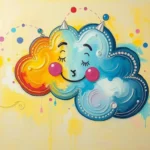
Introduction
Dreams have always fascinated humanity, serving as a window into our subconscious minds. The allure of dreams lies not only in their often bizarre and surreal narratives but also in their potential to reveal hidden truths and desires. As we drift into sleep, our minds weave together fragments of memories, emotions, and experiences, forming a tapestry of symbolism that can hold significant meaning. Understanding the symbolism in dreams can provide valuable insights into our waking lives, offering guidance and clarity in times of uncertainty. In this article, we will delve into the intricate symbolism and meanings behind common dream symbols, explore various scenarios that can alter their interpretations, and provide practical advice on connecting these dreams to real-life situations.
Symbolism and Meaning
Dreams often incorporate a variety of symbols, each carrying its unique significance. Common symbols can range from animals to objects, people, and even entire landscapes. Each symbol can evoke different emotions and associations, varying widely from person to person.
For instance, dreaming of water is a prevalent theme. Water can symbolize emotions, with calm waters representing tranquility and turbulent waters signifying emotional upheaval. From a psychological perspective, water may also represent the unconscious mind, reflecting the depths of our feelings and thoughts. Alternatively, in some cultures, water is considered a symbol of spirituality and purification, suggesting a need for renewal or cleansing in one’s life.
Another common symbol is flying, which often represents freedom and the desire to escape constraints. Flying dreams can evoke feelings of joy and liberation, suggesting that the dreamer is overcoming obstacles or gaining a new perspective on life. However, flying can also indicate a sense of detachment or a desire to rise above challenges, reflecting an individual’s urge to transcend their current circumstances.
Animals in dreams carry their own unique symbolism as well. For example, a snake can symbolize transformation or healing, reflecting the cycle of life, death, and rebirth. However, snakes can also evoke fear or anxiety, depending on the dreamer’s personal associations with this creature. Similarly, dreaming of a lion may represent strength and courage or could signify feelings of aggression and dominance, depending on the context of the dream.
While these symbols have generalized meanings, it is crucial to remember that their interpretations are often subjective. Individual experiences, emotions, and cultural backgrounds play a significant role in shaping how we perceive these symbols. Therefore, when interpreting dreams, it is essential to consider the personal significance of each symbol to the dreamer.
Key Scenarios and Variations
The context of a dream can dramatically alter its interpretation. For instance, a dream about losing teeth can evoke anxiety about aging or fear of losing control. However, if the dreamer is in the process of making significant life changes, the dream might symbolize a transformation or the shedding of old habits.
Similarly, dreaming of being chased can evoke feelings of fear and anxiety. In one scenario, being chased by a monster may signify that the dreamer is avoiding a particular issue or fear in their waking life. On the other hand, if the pursuer is a familiar person, it could indicate unresolved conflicts or emotions related to that individual. The nature of the chase can also provide insight—if the dreamer manages to escape, it may suggest a sense of empowerment or resolution, while being caught could reflect feelings of helplessness or being trapped.
Another intriguing scenario involves falling. Falling dreams are often associated with feelings of insecurity or loss of control. However, the surroundings and emotions felt during the fall can significantly affect the interpretation. Falling from a great height may evoke intense fear, while falling gently, such as from a low height, may represent a less threatening situation, perhaps indicating a transition or change in the dreamer’s life.
Dreams can also present variations in settings that impact their meanings. For example, a dream set in a familiar place, like a childhood home, may evoke nostalgia or unresolved issues from the past. In contrast, a dream set in an unknown location may signify feelings of uncertainty or exploration of new aspects of the self. Each setting can layer additional meaning onto the symbols present in the dream, enriching the overall interpretation.
Real-Life Connections and Takeaways
Understanding the meanings behind your dreams can be a powerful tool for self-reflection and personal growth. To connect your dreams to your waking life, consider keeping a dream journal. Documenting your dreams upon waking can help you identify recurring symbols and themes, providing insights into your subconscious thoughts and feelings. Over time, you may begin to recognize patterns that correlate with your daily experiences or emotions.
When reflecting on a specific dream, ask yourself questions that can lead to a deeper understanding. For instance, what emotions did the dream evoke? Were there any significant symbols present? How do these symbols relate to your current life situation? By engaging in this process of self-inquiry, you can uncover valuable insights that may inform your choices and actions in the waking world.
Moreover, consider the potential messages your dreams are conveying. Are there unresolved issues or emotions that need addressing? Do certain symbols indicate areas of your life that require attention or change? By taking the time to reflect on your dreams, you can gain clarity and direction, helping you navigate challenges and seize opportunities.
Incorporating mindfulness practices, such as meditation or visualization, can also enhance your ability to connect with your dreams. These practices can help you cultivate a deeper sense of awareness, enabling you to engage more fully with your subconscious mind. By approaching your dreams with curiosity rather than fear, you can create a safe space for exploration and understanding.
Finally, remember that dreams are a personal experience. While it can be helpful to explore common interpretations and symbolism, it is essential to honor your unique perspective. Your dreams reflect your individual journey, and only you can truly decipher their meaning. Embrace the process of exploration, and allow your dreams to guide you toward greater self-awareness and understanding.
In conclusion, dreams serve as a rich tapestry of symbolism and meaning, offering insights into our emotions, desires, and subconscious thoughts. By delving into the symbols and scenarios presented in our dreams, we can uncover valuable insights that resonate with our waking lives. Reflecting on our dreams and connecting them to real-life situations can enhance our self-awareness and guide us on our personal journeys. As you explore your dreams, remember to approach them with curiosity and openness, allowing their wisdom to unfold and illuminate your path.







